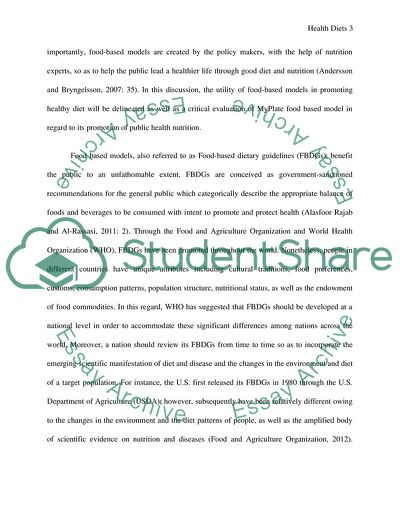Cite this document
(Critically discuss the role of food based models in promoting a Case Study, n.d.)
Critically discuss the role of food based models in promoting a Case Study. https://studentshare.org/health-sciences-medicine/1871642-critically-discuss-the-role-of-food-based-models-in-promoting-a-healthy-diet-for-populations-across-the-globe-using-the-us-myplate-food-based-model-to-illustrate-a-public-health-nutrition-campaign-approach
Critically discuss the role of food based models in promoting a Case Study. https://studentshare.org/health-sciences-medicine/1871642-critically-discuss-the-role-of-food-based-models-in-promoting-a-healthy-diet-for-populations-across-the-globe-using-the-us-myplate-food-based-model-to-illustrate-a-public-health-nutrition-campaign-approach
(Critically Discuss the Role of Food Based Models in Promoting a Case Study)
Critically Discuss the Role of Food Based Models in Promoting a Case Study. https://studentshare.org/health-sciences-medicine/1871642-critically-discuss-the-role-of-food-based-models-in-promoting-a-healthy-diet-for-populations-across-the-globe-using-the-us-myplate-food-based-model-to-illustrate-a-public-health-nutrition-campaign-approach.
Critically Discuss the Role of Food Based Models in Promoting a Case Study. https://studentshare.org/health-sciences-medicine/1871642-critically-discuss-the-role-of-food-based-models-in-promoting-a-healthy-diet-for-populations-across-the-globe-using-the-us-myplate-food-based-model-to-illustrate-a-public-health-nutrition-campaign-approach.
“Critically Discuss the Role of Food Based Models in Promoting a Case Study”. https://studentshare.org/health-sciences-medicine/1871642-critically-discuss-the-role-of-food-based-models-in-promoting-a-healthy-diet-for-populations-across-the-globe-using-the-us-myplate-food-based-model-to-illustrate-a-public-health-nutrition-campaign-approach.


